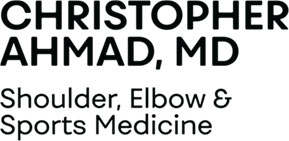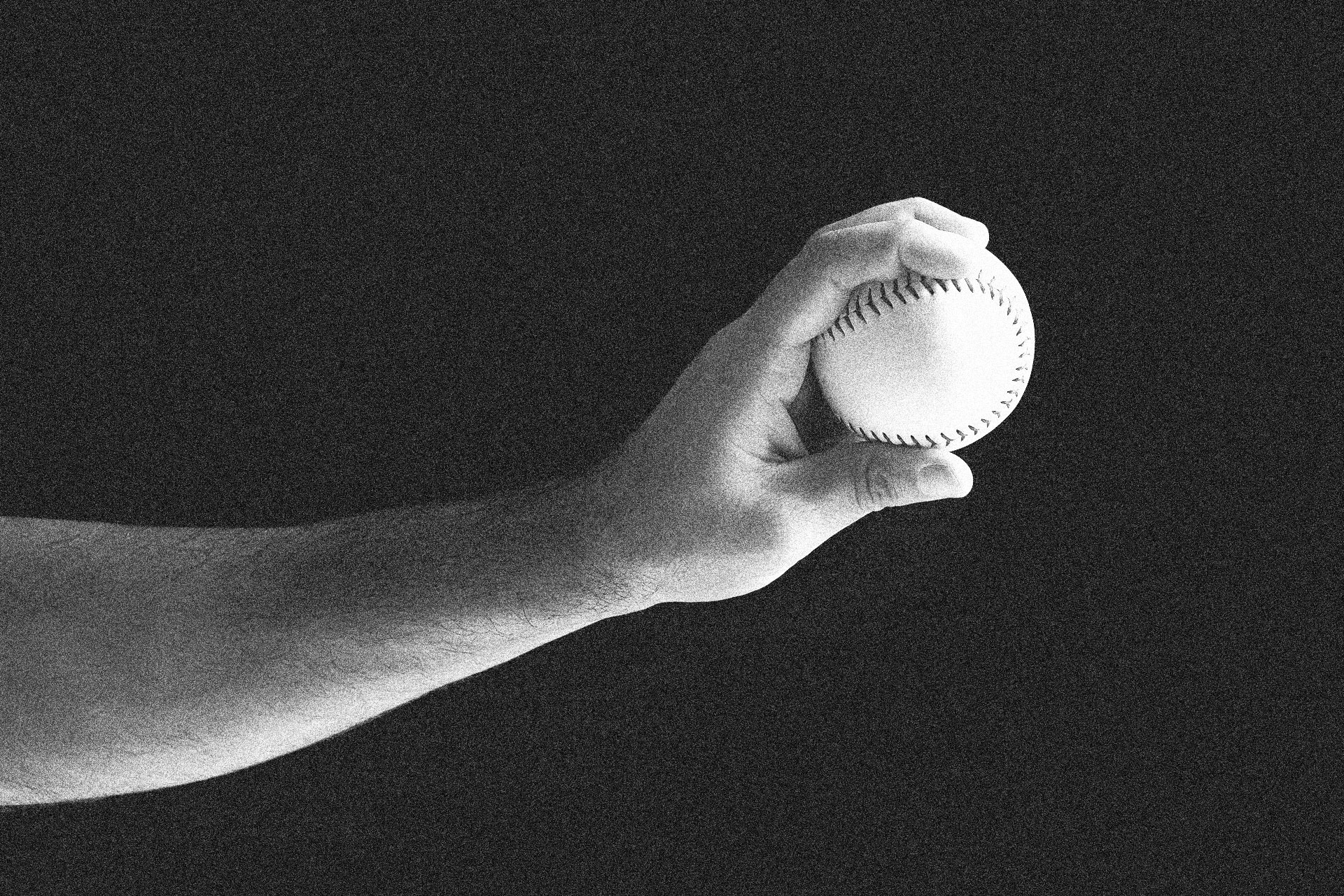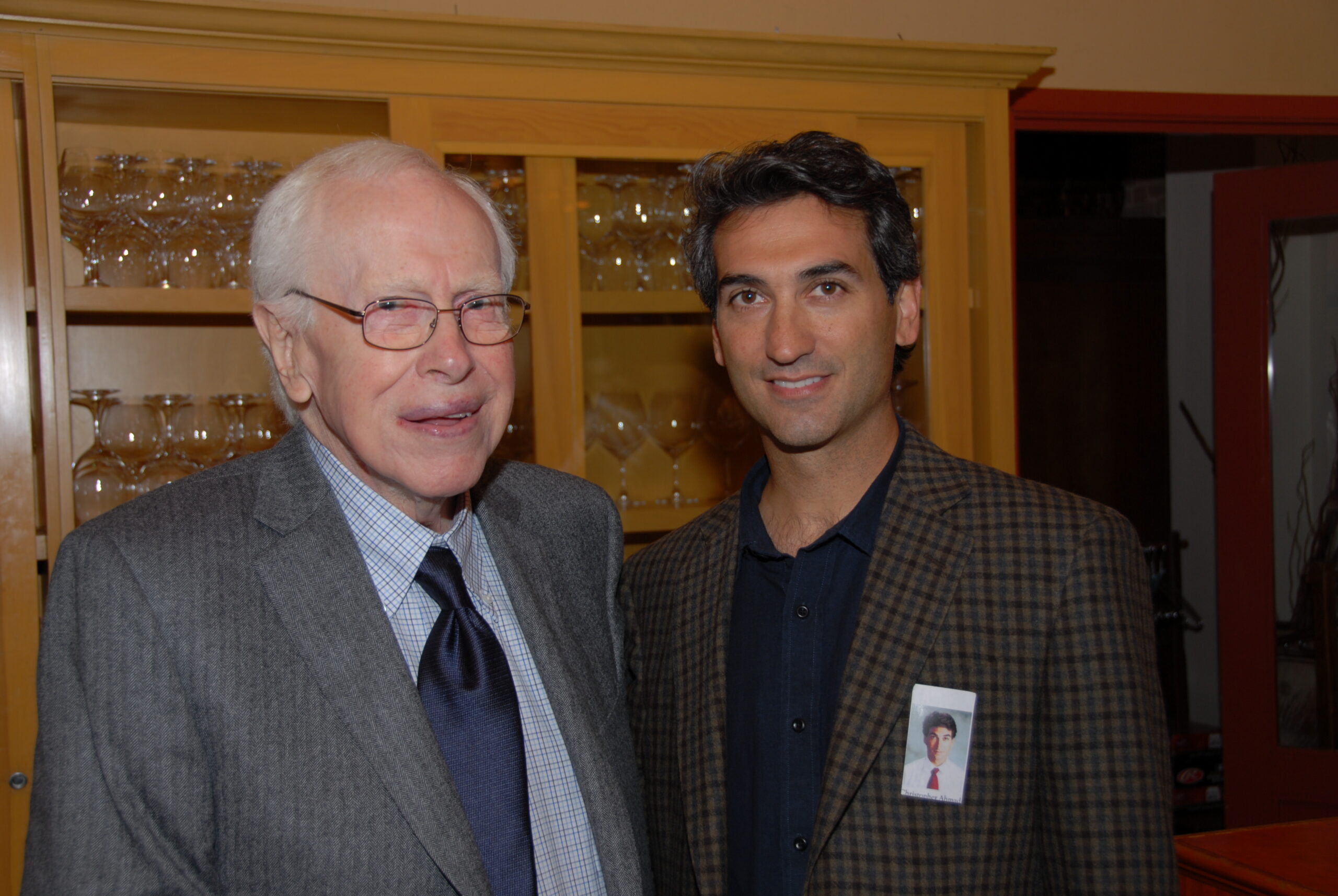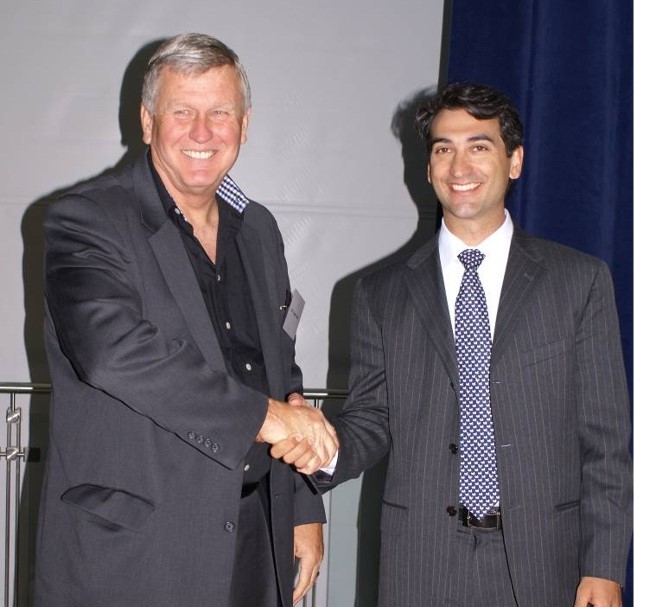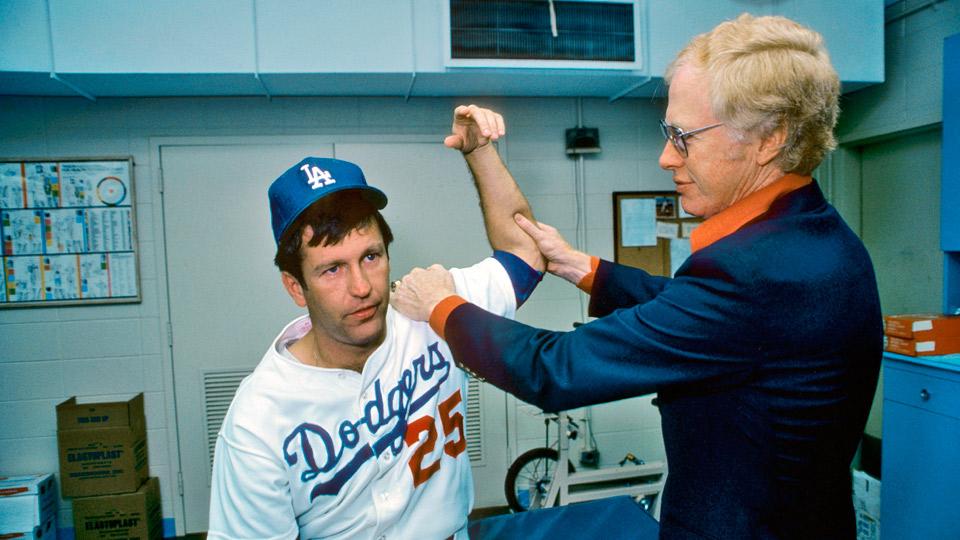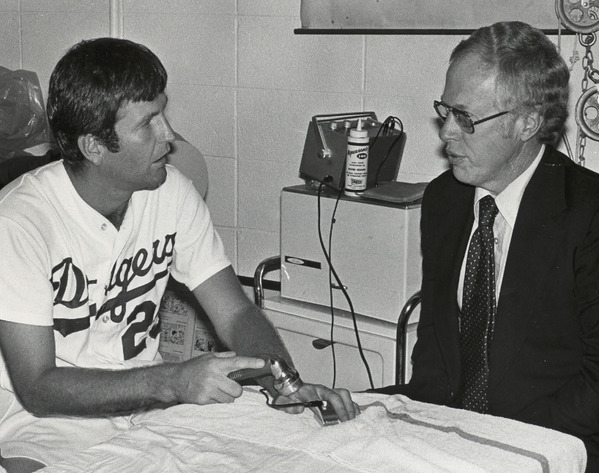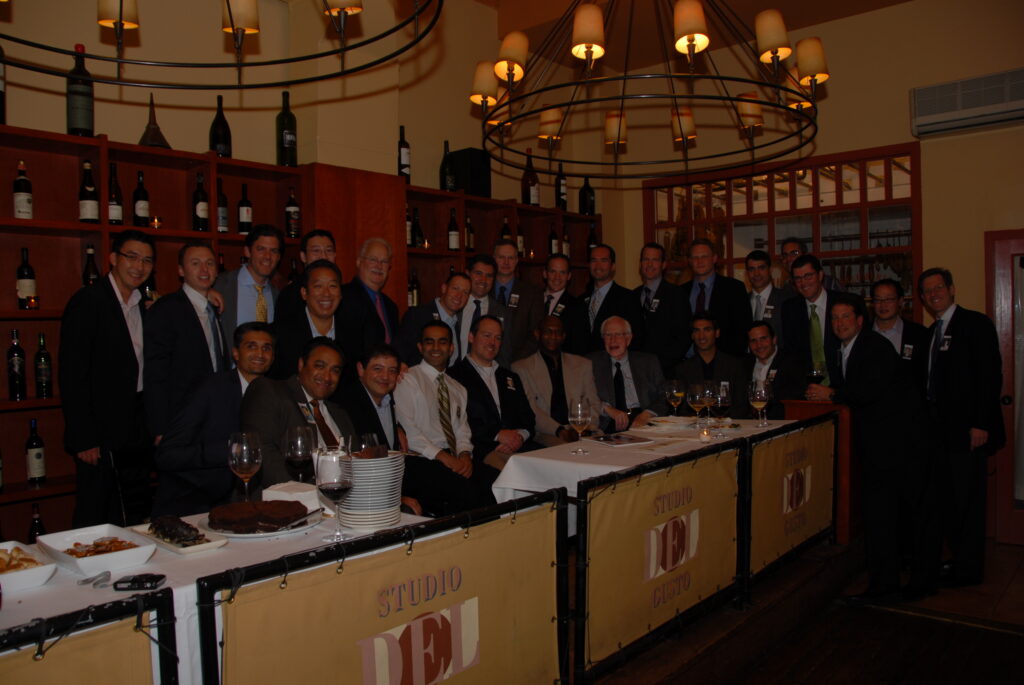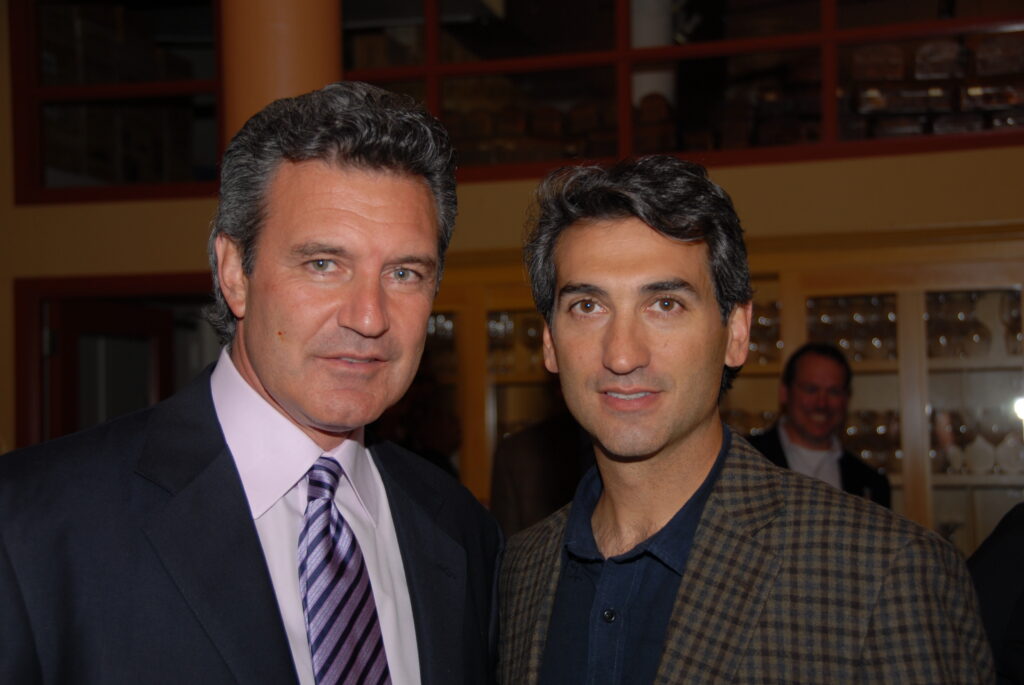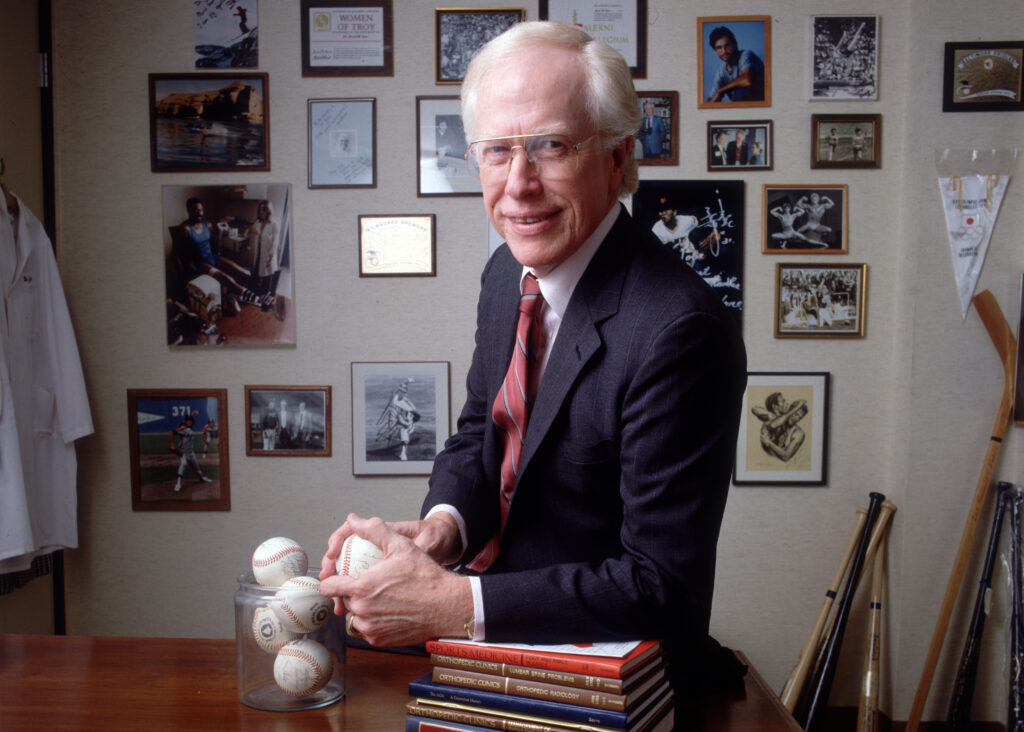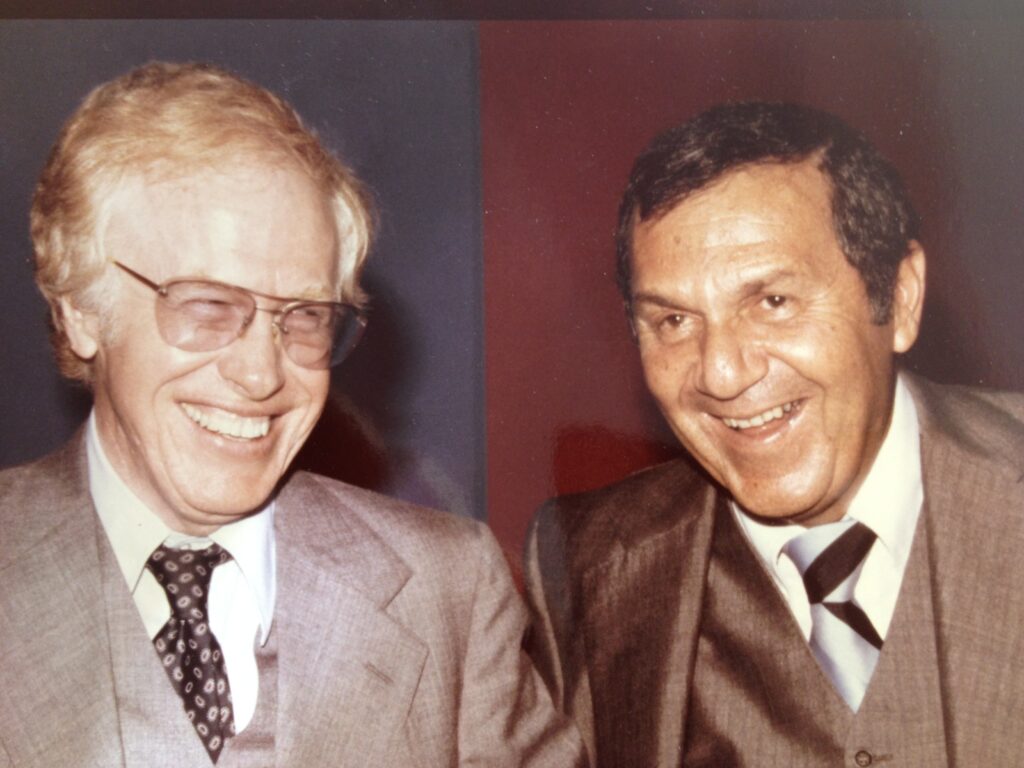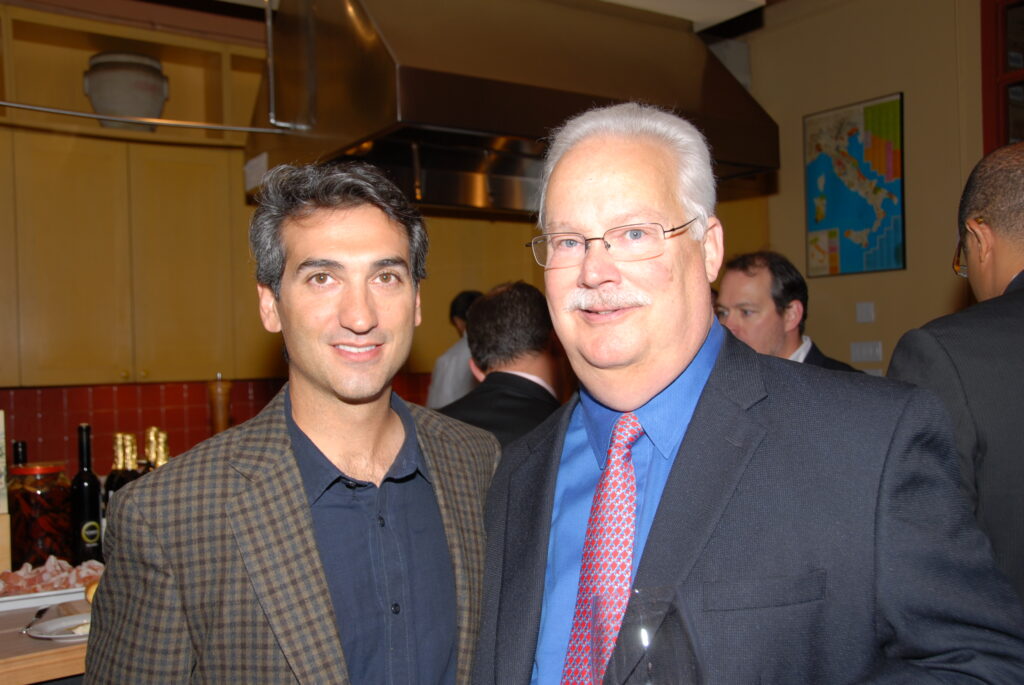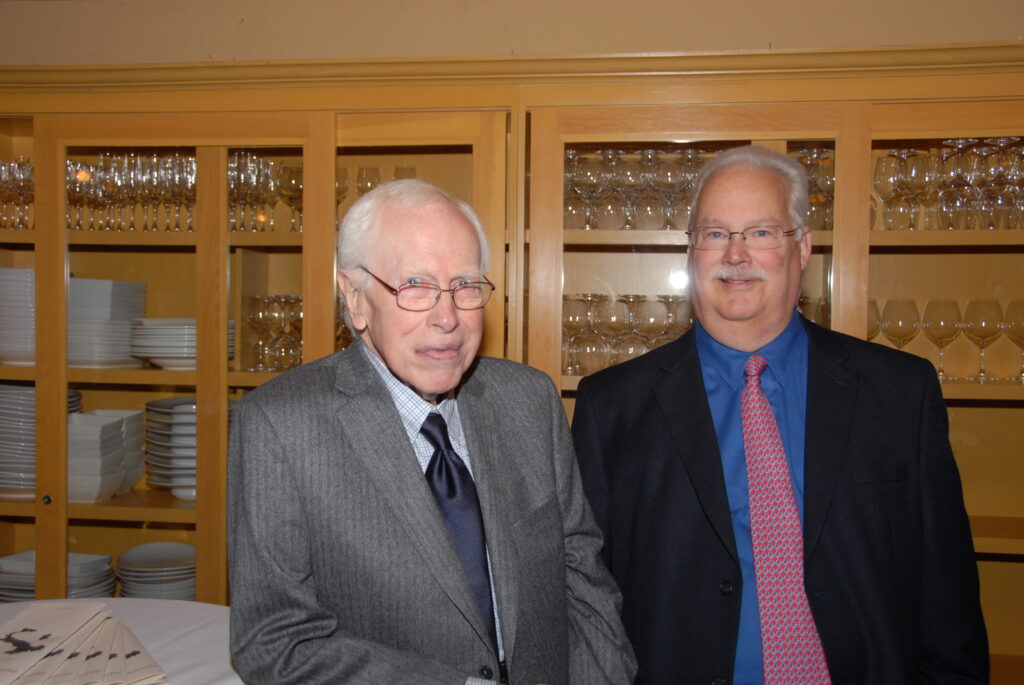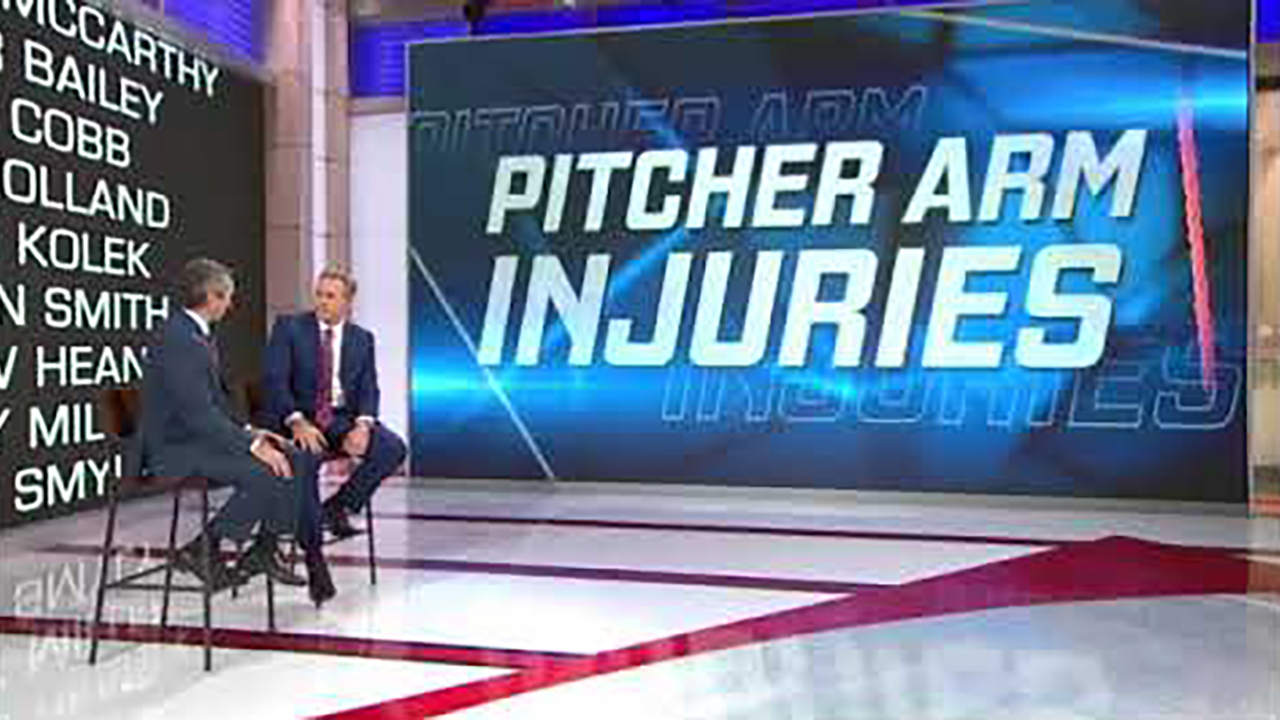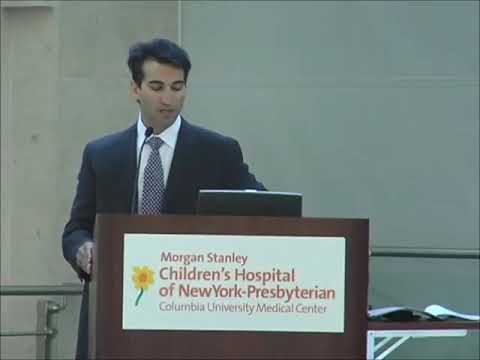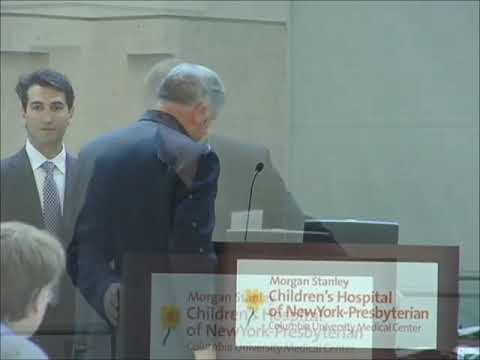The History of Tommy John Surgery
On April 21, 2007 the professional baseball season was well underway. I was not yet the Yankees doctor, but I was spending the morning with a retired Yankee player. I had invited my mentor, teacher, and inventor of Tommy John Surgery, Dr. Frank Jobe to our New York Orthopedic Hospital Alumni Biennial Meeting as our Alan DeForest Smith Lecturer. Our Biennial medical meeting is a gathering or the brightest orthopedic surgeons and alumni of our surgery training program. This year’s meeting was historic with Dr. Jobe scheduled to speak on Tommy John Surgery. Leading up to the meeting however, Dr. Jobe developed incapacitating back pain from spinal stenosis and required surgery on his own spine. Unable to come to the meeting, and rather than simply cancel, he called Tommy John and asked him if he would fill in. John came to our medical center with tremendous enthusiasm and upon walking into the lecture hall, he expressed how was excited he was to “Pinch Hit” for his friend and surgeon Dr. Frank Jobe.
I began the meeting by first giving a lecture on how to diagnose UCL injuries and perform Tommy John Surgery. Was truly an honor to discuss advancements in Tommy John Surgery with Tommy John himself present. I then introduced Tommy John with a few slides on his career achievements. John stepped up to the lectern with no notes or slides and began speaking. “I first hurt my elbow when I was 13 years of age when changing from little league to Babe Ruth League. The mound to home distance increased 45 feet to 60 feet. With my elbow hurt, I played first base for a while. I really became a pitcher in high school.”
“Everyone remembers what they were doing when JFK was shot on November 22 1963. I was getting my first elbow cortisone injection. Early that week, I had thrown a shutout and the next morning could not move my arm.” What many people do not know is that John had excessive amounts for elbow cortisone injections, “Between November 22, 1963 to July 14, 1974, I probably had 40 cortisone injections….!”
John explained that any pitcher who experienced elbow pain at that time became extremely concerned about their career. “I don’t recall a pitcher in the 60s or 70s who had surgery who came back. In 1972, I slid into home and jammed my left elbow. Dr. Jobe diagnosed me with loose chips and recommended surgical removal. I did not know if surgery was the right choice so I called my dad.” John explained that he needed reassurance from his dad that surgery was the best next step. Jobe cleaned out chips and repaired his flexor tendon.
In Spring training 1973 John felt good but was not throwing well. Everyone was asking him including players and eventually players’ wives – is your arm ok? The trainers told him his arm was ok. But John explained to our audience that no one can tell you if your arm is fine. The only person is you. You need to get confident on your own. He took 6 baseballs out of Dodger town and threw for 1 hour and threw as hard as he could with a catcher. Then the next day – he got a catcher and threw curve balls as hard as he could.
Mid season, 1974, Tommy John’s record of 13-3 included five complete games and three shutouts and was the best in baseball that season. In a game against the Expos, John found himself working out of trouble and attempted a sinker to produce a double play. Upon executing the pitch, he felt a searing pain in his elbow. He attempted another pitch that flew awkwardly into the stands and walked off the mound to seek attention from training staff and Dr. Frank Jobe. Without MRI technology available, Dr. Frank Jobe diagnosed John with an elbow ulnar collateral ligament tear, solely based on a physical examination and stress view x-rays. [x-ray pic] Jobe put John’s arm in a cast for four weeks, hoping for the UCL to heal. The injury quickly declared itself as not healed when John experienced pain with return to light throwing. Unable to pitch, and unwilling to give up, John instructed Jobe to surgically fix his elbow. The challenge for Jobe and John was that a surgical solution was nonexistent at the time. When Jobe explained to John that he did not have a surgery for him – John instructed him to “Make something up”.
Dr. Jobe said to me and I knew right then I wanted him to operate on me. “I asked him what are we gonna do” and he replied, “I don’t know. I will get others in the room to help figure it out.” Herb Stark, Lew Yocum, to help guide him. “I told him – If you do your job, I will do my job”
Jobe told John he had a chance 1 in 100 of returning to competitive baseball.
Ironically enough, one of the most significant moments in the history of sports medicine was a combination of invention and improvisation. When Jobe began operating on John on September 25, 1974, he had a plan and a surgical team. When the ligament was surgically exposed and inspected, it was greatly damaged. The ligament could not simply be repaired like an Achilles tendon rupture is repaired. So Jobe got creative: He harvested a tendon from John’s right wrist and made drill holes in the elbow bones where the natural UCL attaches. He then weaved the tendon through the drill holes and pulled it nice and tight. This recreated or in medical terminology “reconstructs” the damaged UCL. Tendon transplants were being performed by Dr. Herb Stark and Dr. Jobe know having a team with graft transplant experience would be valuable.
Rehab
Next question. How to rehab? Since no one had ever had this surgery before, no one knew how to rehab from it. Dr. Jobe in fact told me that he was more concerned with the healing of the grafted tendon than the actual performing of the surgery. Following the surgery, John had lost the function of his ulnar nerve. He had no feeling in his ring and 5th finger and had trouble gripping and making a fist. Dr. Jobe performed an additional surgery to improve his nerve function in December in 1974. While the nerve issue may be considered a complication, John believes it was a blessing. “I would have tried to throw too early and would not be called Tommy john surgery but something else. My nerve was out from my elbow to finger. They told me it would recover an inch a month.”
John with his tremendous commitment exercised seven days a week. He simply threw balls against a wall. Little force but lots of reps. By June of 1975 he’d regained feeling in his fingers. In July he began throwing batting practice. By the winter, he was pitching to live hitters, which meant his next hurdle was pitching in a real game. John never threw a curveball until three weeks before his first start 1 year after surgery. “I felt confident in my curveball and wanted my arm sound.”
John began a routine where he threw off the mound to a catcher every single day. He was afraid to do anything differently since it was working. Even if sore the day after pitching, he would get on the mound and throw to the catcher. “The more I threw, the better my arm felt”. I always threw off the mound. I threw everyd ay except Sunday. My worst day was Monday. My best throwing days were Friday and Saturday. I only threw long once and that was at age 46 to get some more velo. I changed some mechanics and I was unable to continue professional baseball.
John, pitched in his first game 1 day and 1 year after surgery. He started in 7 games in 28 days… The Dodgers wanted him to go to winter ball in Dominican Republic.. John decided to rest and let the team know he would see him in the spring.
Coming Back
In 1976 spring training was delayed. His first time out 3 innings against the Mets. Next day 5 innings against Houston and struck out 9 guys. But the organization told him that he needed to get his fast ball up since it was only 87 mph. John then asked his organization a question, “But how hard did I throw before surgery – ?” No one knew. There were no radar guns before his surgery.
His first game against Braves in 1976 against John said he did ok. John explained he had some tension with the organization. He did not execute the contract because of the prior pennant and was expected to get a raise. He was holding out to get a raise. He was called into the front office and told his next start would be his last start. He was upset but not giving up. His last start would be in Houston which is a difficult ballpark for a sinker ball pitcher. He quickly found himself in trouble. Men on base and in a 3-0 count with current batter 3-0. Ferguson comes out to the mound and says this may be your last hitter..ever.. I suggest you throw fast balls. John throws 4 seamers as hard as possible and manages to get a strike out. He threw 7 inning shutout with 2 hits. Naturally John asked, “Do I get another start”. Incredibly, over span of 13 years…. John never missed a start.
John explained that Jobe is a surgeon and a friend. Why I love Dr jobe – humble. “had I been a better doctor, I would have diagnosed Sandy Kaufex” “I am not a great surgeon, I have great patients…. the patients make me look good.”
After two years of rehabilitation, John resumed pitching. Fourteen seasons and 164 wins later, John retired at age 46. Following John’s successful outcome, Jobe went on to directly help the careers of hundreds of pitchers with his surgery and, indirectly, with the surgeons he taught the procedure to who went on to perform the surgery. It is truly a medical wonder.
At the time of the first operation, Jobe put John’s odds at returning to pitch 1 in 100.
Dr. Ahmad introduces Tommy John
Tommy John on Tommy John Injuries in our Youth
While at our sports medicine meeting, John explained his views on youth injuries. “We need to educate parents to let their kids be kids, parents want to make their kid into a pitcher, rather than let their kids become a pitcher. I grew up in Indiana and could not play baseball year round. I played basketball in high school. Our young players should avoid – year round baseball. In the old days if you got batters you were good, If you did not – you were not good. Unfortunately, we have people in the game of baseball that believe that the guy who throws 96 mph is better than the guy who throws 88. Radar guns do more to hurt kids than anything else. Showcases cause elbow injuries. We will be better off teaching pitching instead of trying to enhance velocity.”
In 2015, John and I participated on a panel discussion of youth elbow injuries hosted by Radio show host Ed Randell in New York City.
- “When I had it done in 1974, I didn’t think it would be the epidemic it is right now. It’s absolutely inexcusable.
- Personally I think it borders on child abuse. You get a parent that sees a kid that has pretty good ability and will hire coaches. They’ll train year-round and then they’ll wonder why their arm goes at 13 years old.“
Fellowship Training with Dr. Jobe
How did I learn how to perform Tommy John Surgery? I spent time with the inventor, Dr. Jobe and several other baseball elbow experts. In October 2000, I assisted Dr. Frank Jobe perform Tommy John Surgery. I immediately transcribed the procedure to paper. This process of writing technical details began the process of mentally archiving the steps and important features. I would go back and study my notes as if I were preparing for a written test. I would close my eyes and mentally mimic the steps of the surgery. I projected myself onto his stool (the operation is performed sitting on stools) repeatedly. I do recall that, as I studied him intensely for the first surgery we performed together, he looked at me and said, “How about I try this one left-handed?” I was utterly amazed with his confidence as he split the skin overlying the inside aspect of the elbow with a scalpel gripped in his left hand until I got the joke (he is, and always has been, left-handed). Every UCL reconstruction case that I assisted with thereafter, I challenged myself to come up with at least five “pearls” or new take-away points to improve my Spring training in DodgerTown. I enjoyed watching pitchers throw their bullpen sessions and the enjoyed watching the respect Dr. Jobe received when walking around the complex. He enjoyed his vanilla ice cream during the day. Towards the evening he would take me to the bar and we would have a Campari and soda. Jobe said it was a nice “digestive”.
How did Tommy John Surgery Get its Name
Dr. Jobe chose not to perform any additional UCL reconstruction surgeries until after he understood the outcome for Tommy John. After John’s successful return, Dr. Jobe began offering it to other pitchers who had ligament injuries. Dr. Jobe was also a academic surgeon, meaning he would teach other surgeons including his fellows in training and also other surgeons at major academic meetings. His first published report of Tommy John Surgery was in The Journal of Bone and Joint Surgery in 1986. Jobe would refer to the surgery as “Ulnar collateral ligament reconstruction of the elbow using ipsilateral palmaris longus tendon graft”. He then would simplify and say, the surgery I performed on Tommy John. Which then evolved to Tommy John Surgery.
Jobe and Hall of Fame
Over 300 hundred names fill the halls in Cooperstown. While hall of famers’ are those that distinguished themselves on the field or in the front office, operating rooms and baseball research buildings are not part of the stadiums. X-rays are and maybe one day mri, treatment rooms and training rooms. I have met many hall of famers and have been the doctor of many, Reggie Jackson, Mariano Rivera, soon to be Derek Jeter. Their baseball accomplishments are worthy of every feature the Hall of Fame offers.
The non-hall of famer that many would consider worthy, has an signitirue scar that will forever live in Major League Baseball stadiums. The scale and scope of what Jobe accomplished is difficult to exaggerate and one could argue – eternal. From 1974 to 2015, there have been 1429 Tommy John Surgeries performed in major and minor league players. The surgery is so ubiquitous as to be seen as almost routine, at least by those who don’t have to undergo the procedure. But pitching careers that would’ve been finished pre-Jobe now return to their previous form (after about a year of rehabilitation, of course) with such regularity as to hardly draw note.
July 2013, the Hall of Fame honored Dr. Jobe during the induction weekend. Jobe’s legacy is different from baseball hall of famers. His relationship with baseball is different. The trust between a player and his surgeon is not measurable. When a player goes to sleep and allows his surgeon to cut into his elbow, the responsibility is enormous. Jobe taught me that while I was his fellow. Jobe may be gone, but watch nine innings and you will hear announcers mention Tommy John Surgery repeatedly.
In 2001, The American Society for Sports Medicine established the Hall of Fame to honor members of the orthopaedic sports medicine community who have contributed significantly to the specialty and set themselves apart. Being inducted into the Hall of Fame is one of the highest honors given to a Society member, and we congratulate the inductees on their great achievements in sports medicine. Dr. Frank Jobe was inducted in 2003. His biography on the site is listed below.
Frank Jobe MD was born in Greensboro, North Carolina
- At the age of 18 joined the US Army.
- He served in World War II from 1943 – 1946.
- He received his Medical Degree from Loma Linda University in Loma Linda, California in 1956 and completed his Internship at Los Angeles County Hospital in 1957, where he also completed his residency in 1964.
- In 1964, Dr. Jobe co-founded the Kerlan-Jobe Clinic in Los Angeles, California and in 1978 he founded and became Medical Director of Centinela Hospital Medical Center’s Biomechanics Laboratory.
- Dr. Jobe and his associate Dr. Robert K. Kerlan formed the Kerlan- Jobe Orthopaedic Clinic Sports Medicine Fellowship Program in 1973. He was an active teacher of residents, fellows and practicing orthopaedic surgeons.
Dr. Jobe is recognized internationally for his excellence in the practice and research on orthopaedics and sports medicine. He saved, extended or put back on course the careers of many amateur and professional athletes. The techniques he used to do the Tommy John surgery are routine today, but what he attempted back in 1974 had never been tried before. It worked and triggered a sports medicine revolution. He also developed the muscle splitting approach to the shoulder for anterior instability, which has been used successfully on many pitchers.
Dr. Jobe authored more than 140 medical publications, 27 book chapters and 7 books. In addition, he gave numerous lectures on orthopaedics and sports injury related topics.
Dr. Jobe received several awards and honors, including:
- AOSSM O’Donoghue Award (1984)
- AOSSM Mr. Sports Medicine Award (1996)
- Charles S. Neer Award (1987)
- Western Orthopaedic Association, Alonzo Neufeld Award (1991)
- Honorary Doctoral Degree from the University of Tokushima, Japan (1998)
The Medical Wonder Stems from the Grit of John and Genius of Jobe
In Tommy John’s rookie year, Kennedy was president. His final year, it was George H. W. Bush. He pitched to Mickey Mantle and Mark McGwire. His career survived the 1 in 100 odds that Jobe gave him can now be studied. Angela Duckworth, a performance psychologist at UPenn would call it grit. She defines grit as passion and perseverance in response to setbacks. Carol Dweck would call it a positive or growth mindset which is defined as the ability to believe that you can get better and your abilities are not fixed. Ryan Holiday would and has ascribed John’s achievement as an example of stoic philosophy. What stands in the way becomes the way. John wouldn’t accept that his career was over. John requested the invention of an experimental surgery. John invented the rehab. John pitched more games after his surgery than he did before. His grit, mindset, and stoic determination translated to a career that did not end until age 46. Even at age 46, John entertained learning how to throw knuckle ball to continue his career.
John’s baseball career was nearing its end 1988, when, at the age of forty-five, he was cut by the Yankees at the end of the season. He insisted on coming to spring training the next year and getting a look. He made the team and was the oldest player in the game. He started the season opener—and won, giving up a scant two runs over seven innings on the road at Minnesota. He used to tell coaches that he would die on the field before he quit.
